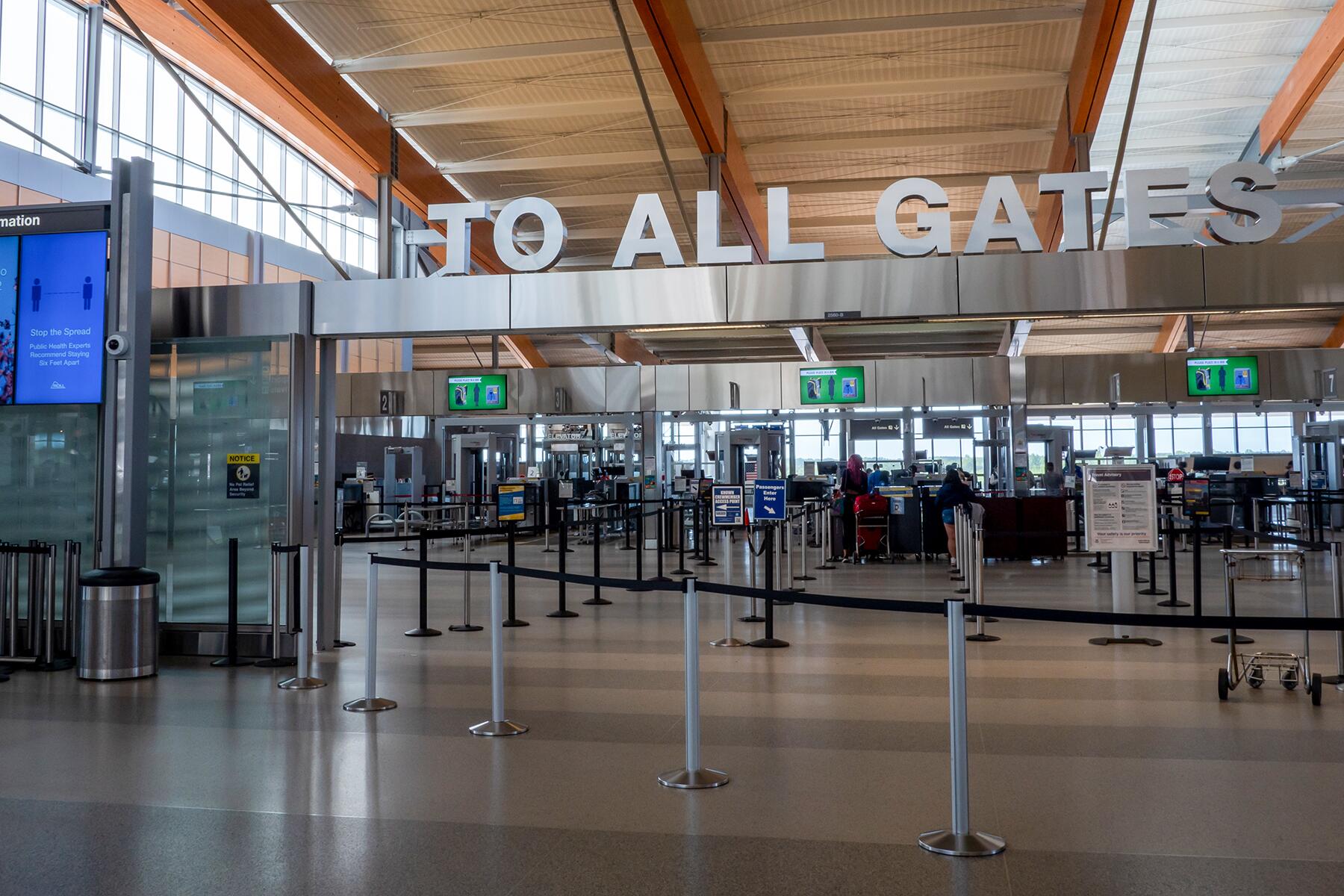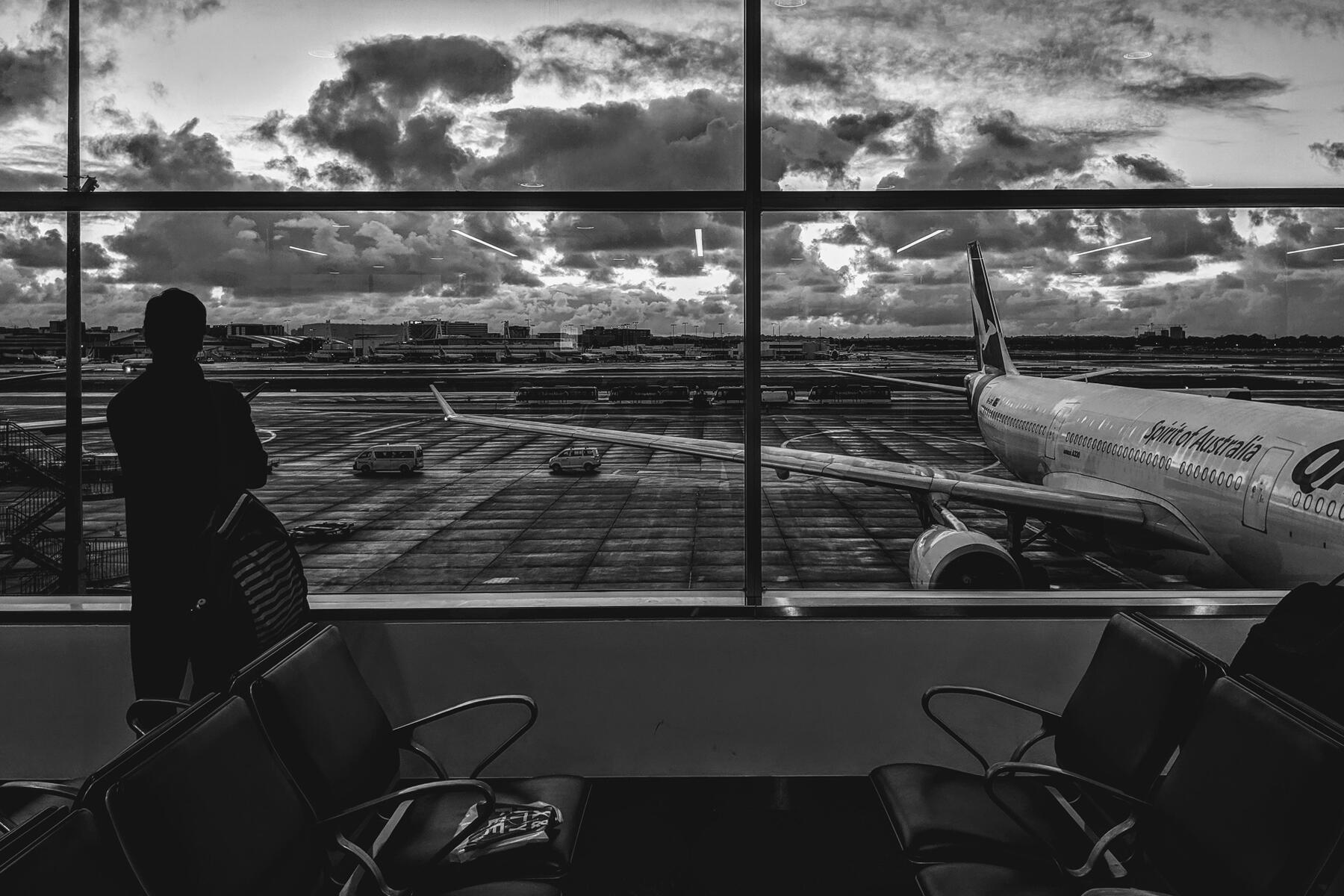As the country begins to open up, here’s what the airport experience is like.
Slowly but surely, the United States is opening back up to travel after being halted by the pandemic, with airlines increasing their routes and flight frequency. If you do decide to fly this summer, the experience might be quite unlike what you’re probably used to. Here’s what you can expect from both major international as well as regional airports across the country today–but keep in mind that each airport is very different, so your mileage may vary. On top of that, everything from TSA regulations to concessions openings can change at the drop of a hat due to the fluidity of the pandemic.




